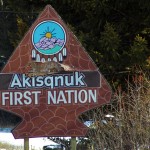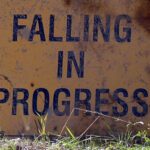Home »

BC Parks licence plate sales help preserve nature
British Columbians are contributing more than ever to the protection and preservation of unique species, sensitive ecosystems, Indigenous culture and the rich history found in provincial parks.
Through partnerships with community groups and First Nations, more than 275 projects related to conservation, community engagement and education, and Indigenous relations have been supported by the BC Parks Licence Plate Program, which has now surpassed 250,000 specialty licence plate sales.
“People in B.C. are passionate about our provincial parks, and that passion has helped us reach another significant milestone for the BC Parks Licence Plate Program,” said Kelly Greene, Parliamentary Secretary for the Ministry of Environment and Climate Change Strategy. “The commitment people have demonstrated to conservation and providing access to nature is remarkable. By working together, we are protecting and enhancing the rich natural legacy of our province.”
The licence plate program began in January 2017 and has generated more than $16 million to support a variety of projects, including habitat restoration for a rare butterfly species in Helliwell Provincial Park on Hornby Island.
Five years ago, a large team of scientists, BC Parks staff, conservation groups, volunteers and members of the local K’ómoks First Nation began restoring the coastal landscape in Helliwell Provincial Park with hopes the endangered Taylor’s checkerspot butterfly would return to its former home. The small orange and black butterflies were last seen in the park in the early 1990s.
Extensive work went into restoring the coastal bluff ecology, which involved removing conifers and invasive plants, and planting native species that provide food for larvae and nectar for adult butterflies. Last year, approximately 800 larvae were released in Helliwell Provincial Park’s restored coastal bluff meadow. Another 1,300 were placed in the park this March. Several Taylor’s checkerspot have now been seen flying around the park, signalling the successful return of rare species.
“I was thrilled to see my first checkerspot flying in the park. It feels really good to be helping restore an ecosystem and seeing years of effort by so many begin to come to fruition,” said Neil Wilson from the Hornby Island Natural History Centre, which co-ordinated with volunteers and students to place native plants grown for the project into the park. “It’s important to see K’ómoks people help in the project by giving guidance with their traditional knowledge and to see children and community members doing their part. I find it very rewarding to be taking part.”
As a result of British Columbians showing their pride in stewardship through purchasing the specialty licence plates, they have also supported wildlife inventories, Indigenous interpretive signage in parks and along trails, invasive species management and educational programming, as well as restoration of trails and sensitive ecosystems.
The BC Parks Licence Plate Program is a partnership between the province and ICBC. Motorists can choose one of three specialty plate designs depicting scenes from B.C.’s parks and protected areas. All net proceeds from the sale and renewals of the specialty plates are reinvested into provincial parks through the Park Enhancement Fund – a special account where revenues enhance programs or services in provincial parks beyond the core services provided by government.
ICBC image
e-KNOW







